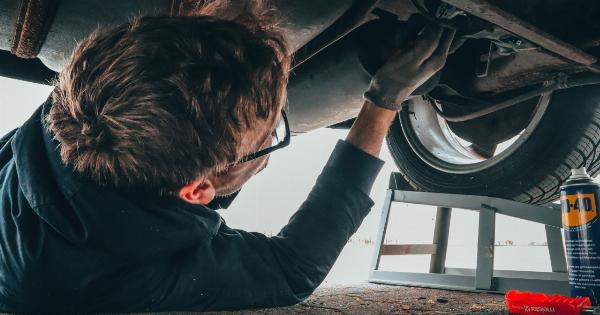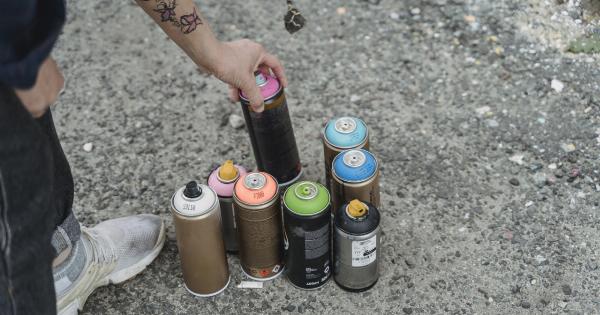A nose job, technically known as rhinoplasty, is a surgical procedure performed to reshape the nose and enhance its appearance. While most nose jobs yield successful results, there are instances where individuals may experience unsatisfactory outcomes.
A failed nose job can lead to functional issues, aesthetic concerns, and psychological distress.
Understanding a Failed Nose Job
When a nose job fails to meet the desired expectations of the patient, it is considered a failed nose job. The reasons for a failed nose job can vary, including surgical errors, poor healing, unrealistic expectations, or patient dissatisfaction.
Common Problems and Symptoms of a Failed Nose Job
Several problems and symptoms may arise if a nose job fails to deliver the intended results. These may include:.
1. Breathing Difficulties
A failed nose job can cause breathing difficulties due to structural complications or internal scarring that obstructs the nasal passages.
2. Uneven or Asymmetrical Appearance
If the nose appears uneven or asymmetrical after a nose job, it can lead to significant dissatisfaction and aesthetic concerns.
3. Excessive Scarring
In some cases, a failed nose job may result in excessive scarring, which can be both aesthetically displeasing and physically uncomfortable.
4. Persistent Pain or Discomfort
Some individuals may experience persistent pain or discomfort in their nose following a failed nose job.
5. Psychological Distress
A failed nose job can have a significant psychological impact, leading to decreased self-esteem, self-consciousness, and emotional distress.
Fixing a Failed Nose Job
Correcting a failed nose job often requires revision rhinoplasty, which is a secondary surgery performed to address the issues left unresolved by the initial procedure. Here are some potential solutions for fixing a failed nose job:.
1. Consult an Experienced Revision Rhinoplasty Surgeon
The first step in addressing a failed nose job is to consult with a highly experienced revision rhinoplasty surgeon. These specialists have the expertise and knowledge required to assess the specific concerns and develop a suitable treatment plan.
2. Identify the Underlying Causes
Understanding the reasons behind the failed nose job is crucial for determining the corrective measures needed. The surgeon will thoroughly evaluate the initial procedure, individual anatomy, and any complications that may have arisen.
3. Developing a Customized Treatment Plan
Based on the assessment, the revision rhinoplasty surgeon will create a customized treatment plan to address the specific issues and achieve the desired results.
This may involve correcting asymmetry, reshaping the nasal structure, or improving breathing function.
4. Consideration of Timing
Revision rhinoplasty is typically performed after the nose has sufficiently healed from the initial surgery, allowing adequate time for the tissues to settle and any post-operative swelling to subside.
The timing varies on a case-by-case basis and is determined by the surgeon.
5. Managing Expectations
It is essential to manage expectations during the recovery and healing process of revision rhinoplasty.
While the goal is to achieve a successful outcome, it is important to understand that perfection is not always attainable, and there may be limitations due to the previous surgery’s impact.
6. Surgical Techniques and Expertise
Revision rhinoplasty often requires specialized surgical techniques and a high level of expertise. The surgeon may need to utilize cartilage grafts, fix structural complications, or address scar tissue to achieve the desired results.
7. Stellar Communication with Surgeon
Clear and open communication with the revision rhinoplasty surgeon is crucial. Thoroughly discuss your concerns, goals, and any apprehensions you may have.
This helps in establishing realistic expectations and ensures the surgeon understands your desired outcome.
8. Ensuring Sufficient Recovery Time
Following revision rhinoplasty, it is essential to allow ample time for healing and recovery. Follow the post-operative instructions provided by your surgeon, avoid strenuous activities, and practice good self-care to promote optimal healing.
9. Patience and Emotional Support
Undergoing a failed nose job and subsequent revision surgery can be emotionally challenging. Ensure you have a strong emotional support system in place and exercise patience throughout the healing process.
Remember that the final results may take time to fully manifest.
10. Post-Surgical Care
After revision rhinoplasty, it is crucial to maintain diligent care of your nose.
Follow all post-operative care instructions provided by your surgeon, attend follow-up appointments, and inform your surgeon immediately if you notice any concerns or complications.
Conclusion
A failed nose job can be disheartening, but with the advancements in revision rhinoplasty techniques, many issues can be successfully resolved.
By consulting with a skilled revision rhinoplasty surgeon, identifying the underlying causes, and following a well-structured treatment plan, individuals can fix a failed nose job and achieve the desired results.































